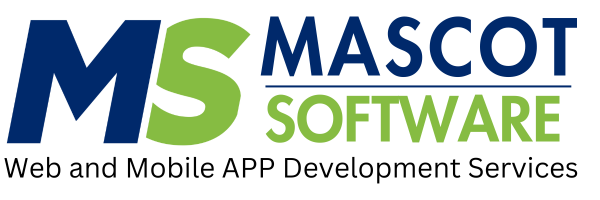
What is Docker?
Docker is an open-source platform that enables developers to automate the deployment of applications inside lightweight, portable containers. These containers package an application and its dependencies, ensuring that it runs the same way regardless of the underlying infrastructure.
Why Use Docker for PHP Development?
-
Consistency: Docker ensures that your application runs consistently across different environments, from development to production.
-
Isolation: Containers isolate your application, preventing conflicts with other applications and their dependencies.
-
Scalability: Docker makes it easy to scale applications by deploying multiple containers across different servers.
-
Portability: Containers can run on any system that supports Docker, making it easy to move applications between environments.
Setting Up Docker for PHP Development
1. Installing Docker
Before you begin, you need to install Docker. Follow the instructions for your operating system on the Docker website.
2. Creating a Dockerfile
A Dockerfile is a script that contains instructions for building a Docker image. It specifies the base image, application dependencies, and commands to run your PHP application.
Create a file named Dockerfile in the root of your project:
# Use the official PHP image as the base FROM php:8.0-apache # Set the working directory WORKDIR /var/www/html # Copy the application code to the container COPY . . # Install necessary PHP extensions RUN docker-php-ext-install mysqli pdo pdo_mysql # Expose port 80 EXPOSE 80 # Start Apache CMD ["apache2-foreground"]
3. Creating a Docker Compose File
Docker Compose is a tool for defining and running multi-container Docker applications. Create a docker-compose.yml file to define the services needed for your PHP application, such as a database.
version: '3.7' services: web: build: . ports: - "8080:80" volumes: - .:/var/www/html depends_on: - db db: image: mysql:5.7 environment: MYSQL_ROOT_PASSWORD: secret MYSQL_DATABASE: myapp MYSQL_USER: user MYSQL_PASSWORD: password ports: - "3306:3306"
4. Building and Running the Containers
With your Dockerfile and docker-compose.yml in place, you can build and run your containers.
docker-compose up --build
This command builds the Docker image and starts the containers. Your PHP application should now be accessible at http://localhost:8080.
Development Workflow with Docker
1. Managing Dependencies
Using Docker, you can easily manage your PHP dependencies with Composer. Add Composer to your Dockerfile:
# Install Composer COPY --from=composer:latest /usr/bin/composer /usr/bin/composer
Now you can run Composer commands inside the container:
docker-compose run web composer install
2. Running Tests
Running tests in a Docker container ensures that they are executed in a consistent environment. Add a test service to your docker-compose.yml:
test: build: . command: vendor/bin/phpunit volumes: - .:/var/www/html depends_on: - db
Run your tests with:
docker-compose run test
3. Debugging
Debugging PHP applications in Docker can be done using Xdebug. Add Xdebug to your Dockerfile:
# Install Xdebug RUN pecl install xdebug \ && docker-php-ext-enable xdebug
Configure Xdebug in your php.ini file:
zend_extension=xdebug xdebug.mode=debug xdebug.start_with_request=yes xdebug.client_host=host.docker.internal xdebug.client_port=9003
4. Continuous Integration
Integrate Docker into your CI/CD pipeline to automate testing and deployment. For example, a GitHub Actions workflow might look like this:
name: CI on: [push, pull_request] jobs: build: runs-on: ubuntu-latest services: mysql: image: mysql:5.7 env: MYSQL_ROOT_PASSWORD: secret MYSQL_DATABASE: myapp ports: - 3306:3306 options: --health-cmd="mysqladmin ping" --health-interval=10s --health-timeout=5s --health-retries=3 steps: - uses: actions/checkout@v2 - name: Set up Docker uses: docker/setup-buildx-action@v1 - name: Build Docker image run: docker-compose build - name: Run tests run: docker-compose run test
Deploying PHP Applications with Docker
Deploying Dockerized applications is straightforward. You can use services like AWS, Azure, Google Cloud, or DigitalOcean to run your Docker containers in production.
1. Pushing Images to a Registry
First, push your Docker image to a container registry like Docker Hub:
docker tag myapp:latest myusername/myapp:latest docker push myusername/myapp:latest
2. Deploying to a Cloud Provider
Many cloud providers support Docker. For example, to deploy to AWS Elastic Beanstalk:
-
Initialize Elastic Beanstalk:
eb init -p docker my-app --region us-west-2 -
Create an Environment and Deploy:
eb create my-app-env eb deploy
Conclusion
Docker simplifies PHP development and deployment by providing a consistent and reproducible environment. By containerizing your PHP applications, you can ensure they run smoothly across different stages of development, from local machines to production servers. Docker's ability to manage dependencies, automate tasks, and integrate with CI/CD pipelines makes it an indispensable tool for modern PHP developers. Embrace Docker in your PHP workflow to boost productivity, reduce errors, and streamline your development and deployment processes.






